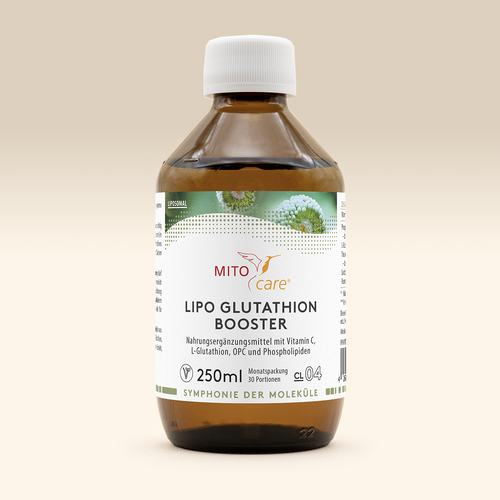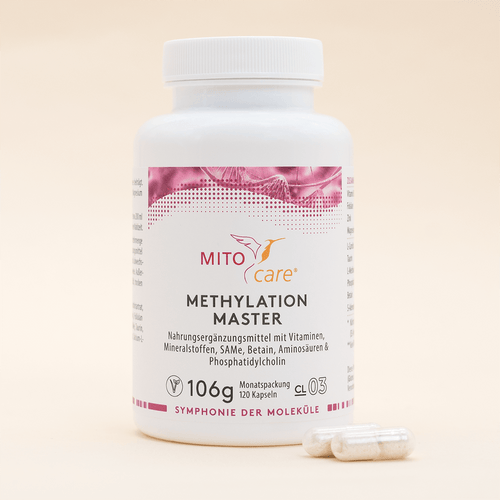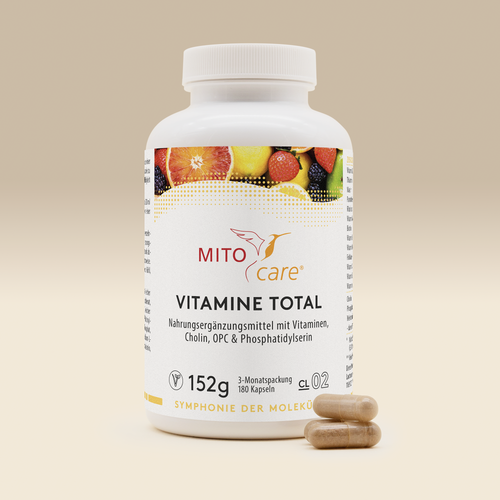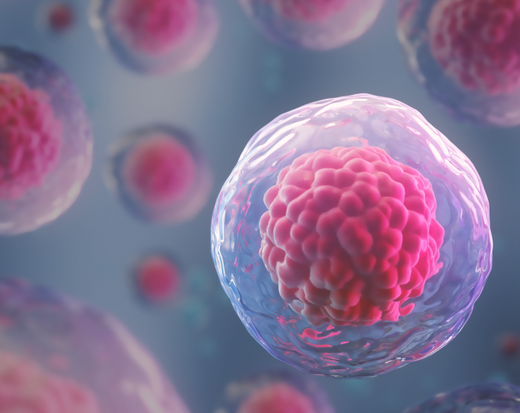Themen dieses Blogartikels:
Table of contents
- Definition: What are phospholipids?
- Structure of phospholipids
- What function do phospholipids have?
- Different phospholipids and their function
- What makes phospholipids unique? and their function
- Use of phosphorus-containing lipids
- How many phospholipids do you need per day?
- When do you especially need phospholipids such as phosphatidylcholine (lecithin)?
- How does a phospholipid deficiency arise and how does it manifest itself?
- What happens if you overdose on phospholipids?
- Which foods contain particularly high levels of phospholipids?
- Bibliography & Sources
Definition: What are phospholipids?
Phospholipids, also called phosphatides, are fatty substances with a phosphate group. More precisely, they are complex lipids that contain an ester bond with phosphoric acid.¹ Phospholipids have a hydrophilic, i.e., water-loving, head and two hydrophobic, i.e., water-avoiding, hydrocarbon chains. Due to their structure, these substances interact well with both water and oil or fats.
Structure of phospholipids
This special chemical property of phosphorus-containing lipids is called "amphiphilic." Depending on how the two parts of the phospholipids are bonded together, two groups are distinguished:
- In phosphoglycerides, also called glycerophospholipids, glycerol forms the basic structure.
- Sphingomyelins, also known as sphingophospholipids, are derived from the unsaturated amino alcohol sphingosine.
What function do phospholipids have?
Phospholipids belong to the membrane lipids and are a major component of all animal and plant cell membranes.² Thanks to their water-loving and water-avoiding properties, these substances can, on the one hand, separate the cellular space from its surroundings.³ On the other hand, phospholipids can mediate at the interfaces between water and oil. In the human body, the phospholipids phosphatidylserine, phosphatidylcholine, sphingomyelin, and phosphatidylinositol are particularly important.
Different phospholipids and their function
- Phosphatidylserine is found primarily in the brain and is important for signal transmission between nerve cells.
- Phosphatidylcholine, also known as lecithin, is a central component of the cell membrane and the most abundant phospholipid. It supports, among other things, lipid metabolism, the body's own detoxification , cell division, and the regulation of blood pressure.⁴
- Sphingomyelin is a building block of the cell or plasma membrane and plays a role in protein transport and molecular synthesis, among other things.
- Phosphatidylinositol is found in the inner cell membranes and is used for signal transmission within the cells.
What makes phospholipids unique?
Together with glycolipids and cholesterol , phospholipids are responsible for the structure of the bilipid layer of biological membranes. They occur naturally in every cell of the body. Because they are both water-soluble and fat-soluble, phospholipids are particularly versatile. These substances, for example, perform important transport functions in membranes and support the brain and myelin sheaths, the protective layer of nerve cells.
If phospholipids, the main component of cell membranes, are missing, the affected cells do not function properly. The result is rapid aging of cells, particularly in the nerves and brain. Other organs such as the heart, liver, skin, and kidneys can also be affected.
Use of phosphorus-containing lipids
In the food industry, phospholipids in the form of lecithin are used as an emulsifier. Due to its special structure, lecithin is able to bind immiscible substances such as oil and water. Foods containing lecithin are labeled with E 322.⁵
Phospholipids also play a role in cosmetics. As a natural component of the skin, they are found in creams, for example, and are said to nourish, smooth, and regenerate the skin.⁶
How many phospholipids do you need per day?
Since phospholipids can be produced by the body itself, they are not considered essential nutrients. Phosphatidylcholine, for example, is synthesized in the liver with the help of the amino acids serine and methionine, as well as vitamins B6 and B3.⁷ For this reason, there is no general recommendation for daily consumption. However, it is certainly possible to obtain phospholipids through food or supplements.
When do you especially need phospholipids such as phosphatidylcholine (lecithin)?
The phospholipid phosphatidylcholine contains choline, formerly known as vitamin B4.⁸ This is an essential nutrient that plays a key role in maintaining normal liver function. It is also needed for normal homocysteine metabolism and normal lipid metabolism.⁹ The European Food Safety Authority (EFSA) recommends the following values for an adequate daily intake:¹⁰
- 400 mg for adults and adolescents aged 15 to 17 years
- 140 to 340 mg for children aged 1 to 14 years
- 160 mg for toddlers aged 7 to 11 months
- 480 mg for pregnant women and 520 mg for breastfeeding women
Pregnant and breastfeeding women have an increased need. Furthermore, initial studies suggest that choline may be beneficial for liver health. Research is currently underway into its use as a medication for diseases such as fatty liver disease and liver cancer.¹¹
How does a phospholipid deficiency arise and how does it manifest itself?
Phosphatidylserine deficiency primarily affects older people, as natural production of this substance decreases with age. Possible consequences include cognitive impairments such as memory problems, as well as depression, sleep disorders, and increased irritability. The risk of developing neurodegenerative diseases such as Alzheimer's or Parkinson's is increased with phosphatidylserine deficiency.¹²
In contrast, a phosphatidylcholine deficiency is more likely to manifest itself in the form of liver dysfunction, including fatty liver disease and liver cancer. Muscle cramps, joint pain, and/or dry skin can also be symptoms. Similar to a phosphatidylserine deficiency, this deficiency can also lead to concentration problems and/or mood swings. Pregnant and breastfeeding women, who have an increased need, are particularly affected. Furthermore, genetic factors and liver disease can lead to a deficiency.¹³
What happens if you overdose on phospholipids?
Those who consume too much phosphatidylserine may experience undesirable side effects such as nausea and sleep disturbances. Nausea and depressive moods have been observed with prolonged overdoses of phosphatidylcholine or lecithin.¹⁴
If you take phospholipids in the form of dietary supplements such as capsules, you should always follow the consumption instructions on the packaging and not exceed the recommended maximum daily amount.
Which foods contain particularly high levels of phospholipids?
Phospholipids such as lecithin are found in numerous animal foods, including eggs, offal, meat, and fish. Vegans and vegetarians generally have no trouble meeting their needs, as lecithin is also found in corn, sunflower seeds, nuts, soybeans, legumes, and vegetable oils. Industrially produced phospholipids are usually obtained from soy, rapeseed, sunflowers, chicken or fish eggs, or milk.¹⁵
This encyclopedia entry is based on carefully researched sources:
Bibliography & Sources
- flexikon.doccheck.com/de/Phospholipid
- chemie.de/lexikon/Phospholipide.html
- chemie-azubis.de/phospholipide/
- vitalstoff-lexikon.de/Further-Vital-Substances/Phosphatidyl-Choline/Definition-Synthesis-Resorption-Transport-and-Distribution
- usatzstoffmuseum.de/lexikon-der-zusatzstoffe/lecithins.html
- pharmazeutische-zeitung.de/phospholipids-as-trendsetters/
- vitalstoff-lexikon.de/Further-Vital-Substances/Phosphatidyl-Choline/Definition-Synthesis-Resorption-Transport-and-Distribution
- verbraucherzentrale.de/wissen/lebensmittel/nahrungsergaenzungsmittel/klueger-mit-lecithin-13457
- verbraucherzentrale.de/wissen/lebensmittel/nahrungsergaenzungsmittel/klueger-mit-lecithin-13457
- efsa.europa.eu/de/press/news/160817
- fh-muenster.de/de/ernaehrung-therapie/news-aus-dem-nut/cholin-and-liver-health
- vitalstoff-lexikon.de/Weitere-Vitalstoffe/Phosphatidyl-Serin/Mangelsymptome
- vitalstoff-lexikon.de/Further-Vitalstoffe/Phosphatidyl-Choline/Deficiency-Symptoms
- mikronährstoffe.de/fette-und-oele/phospholipide
- sms-vt.com/de/industrien/pharmazeutische-industrie/phospholipid


























